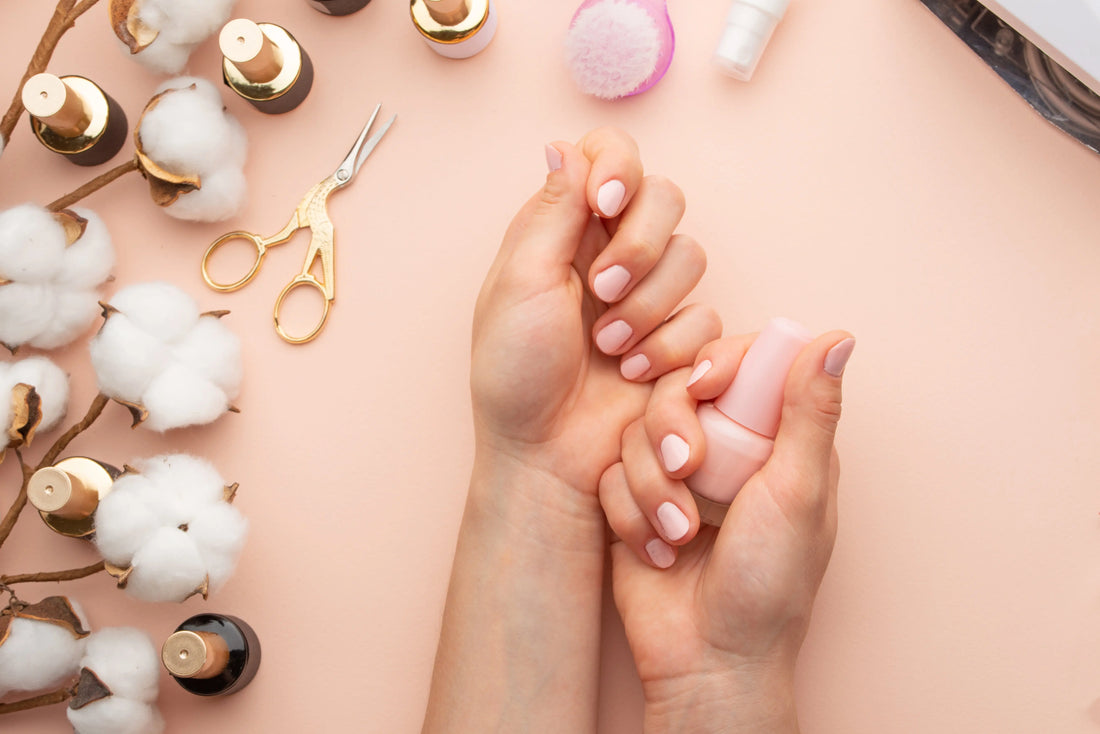Today, nail polish is one of the best ways to express your personal style and creative interests. There are many different ways to apply and style your nail polish, from bright and bold colors, to nail art, to classic patterns and designs.
The evolution of nail polish and nail art technology means that creating a look you love is easier than ever, and there are so many different methods and options to pick from that nail polish has become an art form of its own.
Nail polish and nail art has existed in many different forms for thousands of years, representing society, cultures, and individuals throughout history just as it does today. Here at Nailboo, we’re excited to share some of the most innovative new nail tech on the market, that brings salon-quality manicures right to the comfort of home, and we want to celebrate the long-running history of nail polish that brought up to this point.
Early History of Nail Art and Polish
Many different theories exist about the first recorded instances of nail polish in modern human societies. Here’s a look at some of the most important and influential stages of early nail polish history.
Ancient Babylon
Most historians will date nail polish as we know it today back to Ancient China, but it can be argued that the use of nail polish started even earlier, around 3200 BC in Ancient Babylon, the area of modern-day Iraq.
There, nail polish was used by warriors dressing for battle, who often styled their hair and wore other forms of makeup as part of their warrior identities. Like many cultures to follow, the color of the nail polish could indicate their status, and typically warriors used black and green nail polish to intimidate their enemies.
This is not the only instance in history where men used nail polish, rather than women, and the process was so important to their culture that there is even evidence of gold manicure sets dating back to the era.
Ancient China
The manicure took on another use in Ancient China around 3000 BC when it was used for distinctions between class and social rank. The use of nail polish lasted through several centuries of Chinese history and the colors and technology evolved over time, with red and black replacing metallics as the dynastic power transferred.
Red was a color of royalty, reserved along with specific ingredients, to the ruling classes. At certain times throughout Chinese history, the lower classes could adorn their nails in neutrals and pale colors, but painting your nails the color of the royals was punishable by execution.
Many of the ingredients used for nail polish in Chinese history are similar to the paints of artists of antiquity, like egg whites, beeswax, and Arabic gum, a type of hardened sap. The polish was dyed with flowers like orchids or roses and left on the surface of the nail to create a stain effect.
Egyptian Leaders
Many rumors circulate around Cleopatra and, indeed, she has become somewhat of a legendary, almost mythical figure. That can make it difficult to discern truth from fiction when it comes to her extraordinary life.
Many stories claim that Cleopatra used bright red henna to dye her nails, but the truth is that the practice was largely followed in Egypt and surrounding regions, and history indicates that Nefertiti was one of the first leaders to follow such a method, as henna was popular and used for many processes in Egypt at the time.
When Cleopatra did come to power, however, she purportedly reserved the bright red shade for royalty, just as in Ancient China. Some rumors even speculate that she added blood to the henna dye for increased brightness of shade, but they are difficult to corroborate and likely more myth than truth. Regardless, red has remained a color that, even today, speaks to class and elevation of status.
Modern History of Nail Art and Polish
Nail polish was not introduced to the western world until the last hundred or so years, and recent history has seen vast changes and evolutions in the world of nail paint. Here are some of the key events that occurred as nail polish became more accessible.
The First Salon
Until 1878, nail polish was applied at home or by a lady’s maid. Mary E. Cobb opened a salon in the United States called Mrs. Pray’s Manicure, where she took the skills she had learned abroad in France and made them accessible and marketable for the first time. Thanks to her, we have the concept of an at-home manicure, as she created products, guides, and even developed the emery board.
The Automobile Gains Popularity
It may seem strange, but the invention and popularizing of the automobile is directly related to the proliferation of nail polish. The idea of liquid polish was created and designed by Cutex, a company that had been producing cuticle oil up to the 1920s.
A makeup artist named Michelle Menard took it a step further. Intent on mimicking the shine of a car’s lacquer, she eventually contributed to the brand known today as Revlon, which started with nail polish and soon moved on to other makeup products. Her success can be credited to the age of the flappers and the rise in female independence and changing beauty standards.
Acrylic Nails Origins
Polish isn’t the only part of nail history with interesting origins. The acrylic nails date back further than might be expected, to the office of dentist Frederick Slack, in the late 1950s. After reconstructing a broken nail with materials he had for his practice, the idea of false, applicable nails was born, and by 1978, the acrylic nail was available to all.
Today, there are many variations of applicable nails as the result of Slack’s invention, including gels and Shellac nails, and even dip polish nails. They have become safer and less impactful on the nail, while still retaining all of the benefits of his original design.
The Influence of Popular Culture and Celebrity Endorsement
In recent years, nail polish and nail art have undergone hundreds of changes and evolutions. The French manicure was created for the catwalk and copied by millions of women worldwide.
The company Essie launched, creating market competition and widening the catalog of available colors and hues for nail polish and fashion enthusiasts. Rita Hayworth and Uma Thurman popularized bold, blood-red nails for modern audiences, and now nail salons are open across the country and around the world.
In addition to acrylic nails, we now have Shellacs, gels, dips, and more. There are designs for special occasions and every day, stamps, decals, gemstones, and more. Nail polish producers are held to a higher standard than ever before, and the nail polish is safe and low impact, so you can integrate it into your lifestyle without worry. With so many different options to pick from, nail polish can be used to represent your personal style and favorite new looks for every season.
Nail Polish Has a Rich History
Nail polish enthusiasts know that nail polish and nail styling is nothing more or less than an artistic discipline and, like art, it has a long and exciting history and evolution. From the ancient Babylonian warriors who wore their nail polish into battle to intimidate their enemies to the modern models who flaunted French tipped nails on the runway, nail polish and nail art have held cultural, social, and artistic value for thousands of years. And it continues to evolve and grow today.
Here at Nailboo, we hope to be part of the next wave of evolving nail polish importance and influence. We’re dedicated to providing affordable and accessible salon-quality manicures right at home with the use of dip nail kits. These manicures will protect your nails, remain strong and long-lasting for weeks, and come in a wide range of colors and styles, from glitter nails to neon ones.
When you’re ready to be part of what the future of nail polish history has to hold, make Nailboo your first stop. Explore our growing catalog of kits and tutorials to find the looks you really love and begin making nail art history of your own today.
Sources:
From Ancient Egypt to Cardi B: A Cultural History of the Manicure | Guardian
The USA’s First Nail Salon Opened in 1878 | New York Post
History of the Flapper, Part 2: Makeup Makes a Bold Entrance | Smithsonian Magazine

